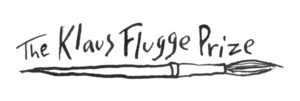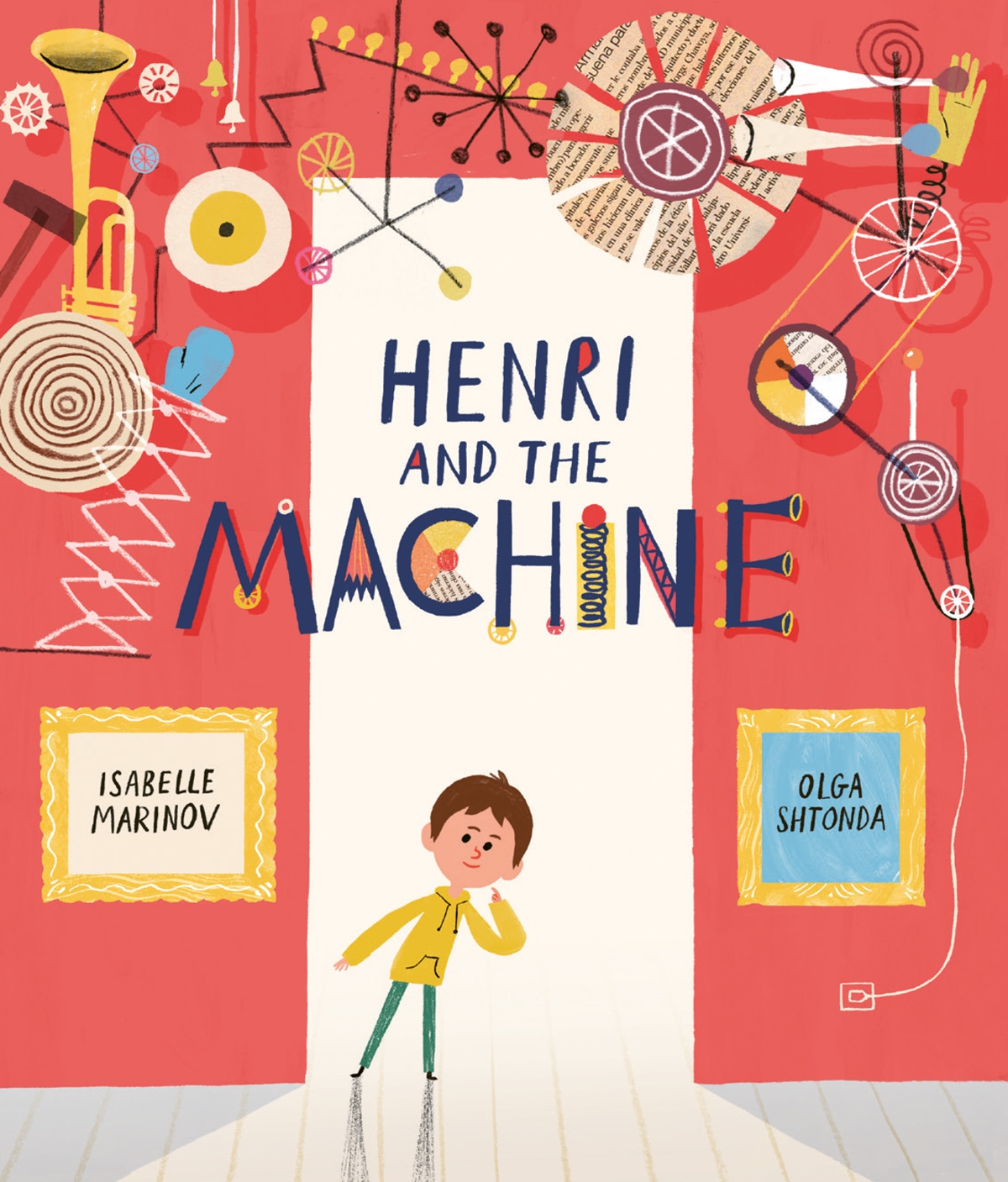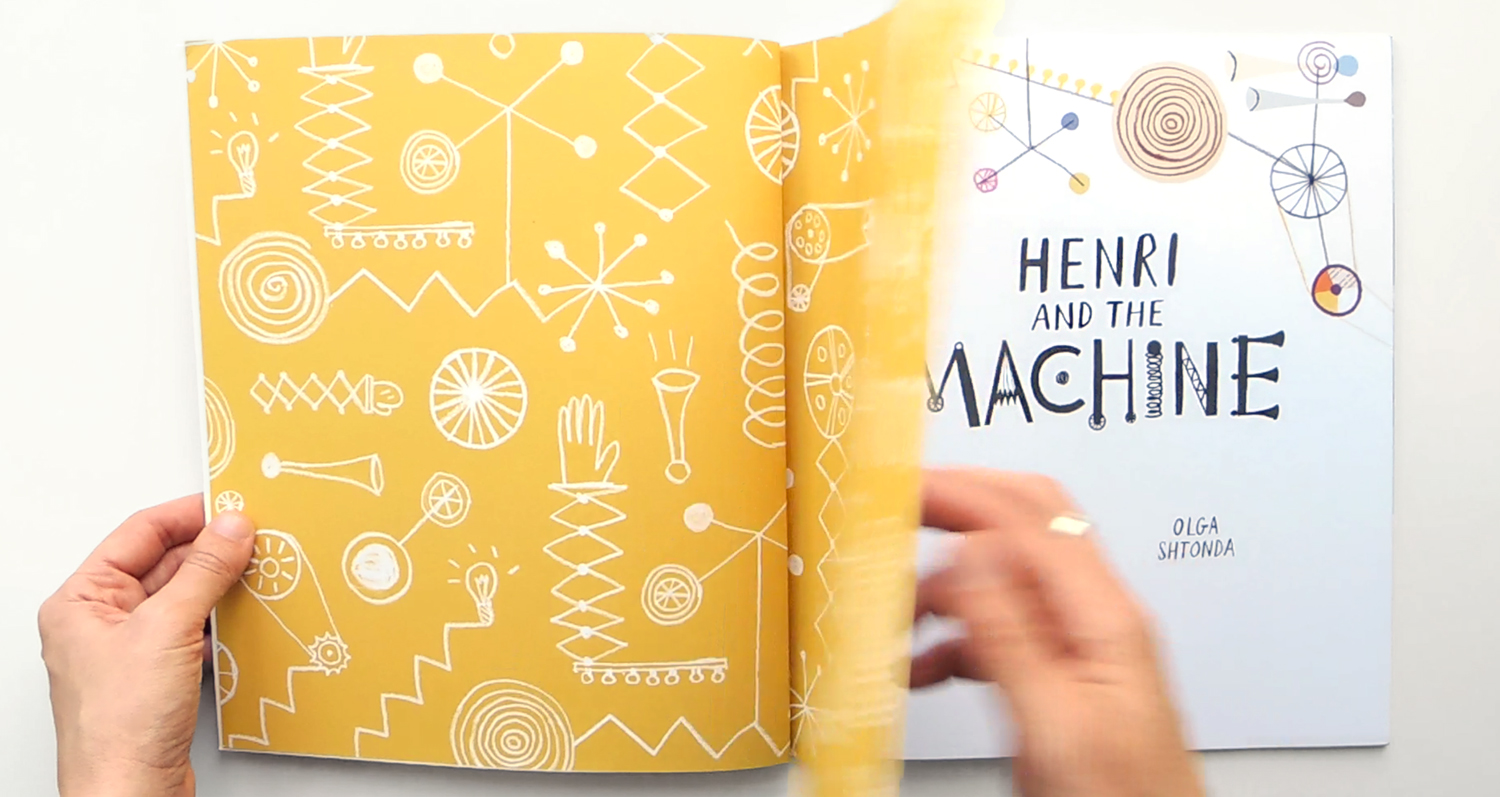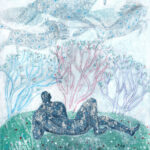

Henri and the Machine, by Olga Shtonda
Henri and the Machine illustrated by Olga Shtonda, written by Isabelle Marinov, is one of the six books shortlisted for this year's Klaus Flugge Prize.
Henri wants to go to the beach, not the art gallery, but his school trip turns out to be much more enjoyable – and eye-opening – than he expects when he learns what art is for! All the visual jokes land and they made the Klaus Flugge Prize judges laugh. They admired the way the illustrations tell the story so well and how the book really does explain the point of art.
Former Klaus Flugge Prize judge, Senior Lecturer in Education: Primary English and Children's Literature, Mat Tobin interviewed Olga about her book.
Olga, you combine various techniques such as printmaking, ink, pencils, collages, and digital media in your work. Can you discuss how you integrated these techniques in Henri and the Machine and what is so appealing about this approach?
I like to balance digital and hand-drawn techniques in my work because it provides a lot of space for experiments. Likewise for Henri and The Machine, I used my favourite combination of hand-drawn textures and digital which was very relevant for this book. The story takes place at the art gallery, and adding brushstroke, pencil, paper and printmaking textures gives the feeling of this place. I used my textures for backgrounds and small details. I also used newspaper scans in this book because I was inspired by the art of the 20th century and movements which made the collage technique using clippings from newspapers and magazines so popular.
You mentioned that travel, cycling, and people-watching inspire your work. How do these activities influence your illustrations?
For every artist, it is important to observe a lot and always be curious. So, travelling and cycling allow me to see more things and meet more people. I think it’s essential not only to observe but also to put these things on paper in order not to let them disappear. I also use a sketchbook as a private space to explore ideas and things around me which become the basis for future works and illustrations.
Can you share your journey into illustration and how your experiences, courses, modules, or lecturers have shaped your artistic style?
I have been drawing since childhood. After school, I studied design, but I didn't like what I was doing so I entered the graphic art faculty at Kharkiv State Design and Art Academy in Ukraine. There I realised that illustration really makes me happy. Besides illustration, I’ve been studying graphic art and printmaking, which I think has greatly influenced my style. We studied various printing techniques such as etching, linocut, lithography and I think the love for textures and experiments with layers was born during that period. In 2019 I received Ars In Fabula Grant Award, which allowed me to study in Italy and get a Master’s Degree in editorial illustration. It was a valuable experience to dive deeper into the world of children’s book publishing and push my professional career as a children’s book illustrator.
What kind of research did you do for Henri and the Machine? Can you share any sketches or preliminary work that helped shape the final illustrations?
My creative process always starts with the topic research and sketching. I visited various art museums to get ideas. I got a lot of inspiration from 20th century art, especially Dada. They used a lot of collage techniques, which I deeply admire. Of course, I was inspired by Jean Tingueli’s kinetic art machines that extended the Dada tradition into the later part of the 20th century. The main reference was New York’s MoMA collection of contemporary art. Most of the sketches got lost during my move back to Ukraine from Mexico where I’ve been working on this book. It is nice that this book remained as a memory of this period of my life.
How was your collaboration with Isabelle Marinov? Can you describe your process of bringing her words to life through your illustrations? Did you feel that you had enough creative flexibility around the written narrative?
Although we keep in touch with Isabelle Marinov on socials, we didn’t communicate directly during the work process. A whole team worked on the book, so the publisher was in charge of communication. As for me, I am used to this kind of cooperation. The team was wonderful and I felt enough creative flexibility in bringing Isabel Marinov's words to life. I do not think the process should be difficult in order to achieve a good result. I enjoyed the illustration process during my work on Henri and the Machine, proving that this text has found the right illustrator.
How did you decide on the designs for the cover, endpapers, and other peritextual elements in the book? Are there any particular aspects you're especially proud of, and do you enjoy this part of the picturebook process?
I really appreciate this part of the work on the book, I think that attention to the smallest details is one of the most important things in the book. I love how I come up with these things naturally as I work. My favourite peritextual element of the books always has been endpapers. It’s exciting when they bring some hints as you open the book. For this book's endpapers, I drew graphical parts of the machine with a pencil. It looks light and playful, I like it. For the cover, it was important for me to show that the book is art-related and takes place at the art gallery, and at the same time I had to arouse curiosity about the Machine.


Were there any significant challenges you faced while working on this book? How did you overcome them?
I spent a lot of time thinking about the design of the Machine because it is not just a museum piece, but an important character. As I’ve mentioned, I was inspired by Jean Tingueli’s kinetic art machines, but when I had some abstract machines in my sketchbook, it turned out not interesting at all. Finally, I came up with the idea to make it look similar to a giant fish and to make the connection between the art and Henry's fascination with the ocean even stronger. This solution is simple, but I am happy with how it works.

Please can you give us a tour of your workspace and share some of the materials you use?
For the last 1.5 years, I had to change workplaces three times so I got used to being quite minimalistic, ready to work in different places and move anytime. My working kit includes Macbook, Wacom tablet, a sketchbook with Fabriano paper, and a big pencil case with watercolour pencils, acrylics and brush pens. I always carry a couple of illustrated books with me and their number increases significantly when I settle down for a while. Also, I need a multifunctional printer in every place because it is very important for my work. I miss my home studio in Kharkiv where I have my etching press and big library, but staying there is no longer safe due to the constant Russian shelling of the city. But my current workplace in the city of Lviv is very nice and cosy. I always dreamed of having a big window in front of my desk and a huge tree outside and now I have it.
Are there any contemporary artists or illustrators whose work you admire and think everyone should encounter? Also, can you share a little about the projects you're currently working on and what we can look forward to reading from you in the future?
I have always been fascinated by the works of artists who have become successful in illustrating their own stories. Among them are such famous illustrators as Isabelle Arsenault, Beatrice Alemagna, Kitty Crowther, Oliver Jeffers and many others. In recent years in Ukraine, the world of illustration has also begun to develop, and we have wonderful talented young creatives such as Grasya Oliyko, Oleksandr Shatokhin and Oksana Bula writing picture book. I want to try writing myself too but I’m also happy to collaborate with professional writers. At the moment, I am very excited to be working on a very moving story by the amazing Nicola Davies, and I hope this book will see the world in early 2026.
Henri and the Machine is published by Templar, 978-1800783751, £7.99 pbk.

The Klaus Flugge Prize is funded personally by Klaus Flugge and run independently of Andersen Press.
Website maintenance & Copyright © 2024 Andersen Press. All Rights Reserved. Privacy & Cookie Policy.























